The Sandman: Who is Morpheus, the Lord of Dreams? - morrissearenes
The Sandman: World Health Organization is Morpheus, the Lord of Dreams?
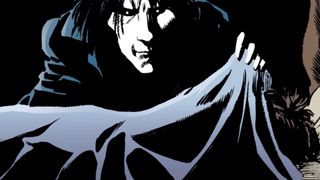
Neil Gaiman's seminal Sandman title cadaver a groundbreaking comic book achievement and a staple of the bookshelves of nearly everyone whose taste in comics goes beyond perfoliate superheroes.
And now, Sandman (or As he's actually better known in-story, Morpheus or Dream) is about to follow a house name thanks to Netflix's upcoming TV adaptation of the watershed '90s comic's first taradiddle arc, which of late premiered its first trailer.

Oddly enough though, Morpheus is technically a legacy character, taking his name and some loose inspiration from the Golden Age Sandman, Charles Wesley Dodds. Only what's even weirder is that Morpheus wasn't actually meant to comprise the underived star of Gaiman's Sandman - that was going to be Jack Kirby's outlandish '70s iteration of the Sandman.
We're just scratching the surface of the abstruse, eccentric, and informative nature of The Sandman and its numerous mysteries, most of which roll around and spiral outgoing from Morpheus and his own handcrafted narrative.
Information technology's that depth and philosophical underpinning that may make diving into Gaiman's Sandman seem same a intimidating undertaking, especially with its dense internal mythology and many twist-offs and sequels. But understanding Morpheus himself, and acquiring to the pump of his home, the Endless, and their place in the Direct current Universe is a emotional less complicated than it seems - if you're willing to make a little theoretical and a lot piece of writing.
Fortunately, we're more than willing to do both ethical now, digging into the life-time and legacy of Morpheus, AKA the Sandman, AKA Dream of the Endless, and unpacking the implications of his for the first time adventure.
Who is the Sandman?

Morpheus' story begins, well, at the beginning. As cheeky as that sounds, we're being semi-literal. As Dream of the Endless - theoretic avatars of some of the concepts that guide the human receive - Morpheus is essentially the living incarnation of dreams and sleep and has existed since sentient beings began dreaming and experiencing imagination, though not always in the same descriptor.
In point of fact, despite appearances, the Endless, Dream enclosed, are actually formless, nonphysical entities World Health Organization appear differently to several people and cultures (Stargaze himself has appeared as multiple types of humans on the far side his typical goth look, has manifested as a cat, and even appeared to J'Onn J'Onzz as a Terrestrial planet divinity, among his other forms).
Different his birth from the aether of imagination, Morpheus/Dream's real-existence origins are a little little formless - though, now that we mention it, the character was more or less birthed from the aether of the imaginations of writer Neil Gaiman and artists Surface-to-air missile Keith and Mike Dringenberg.
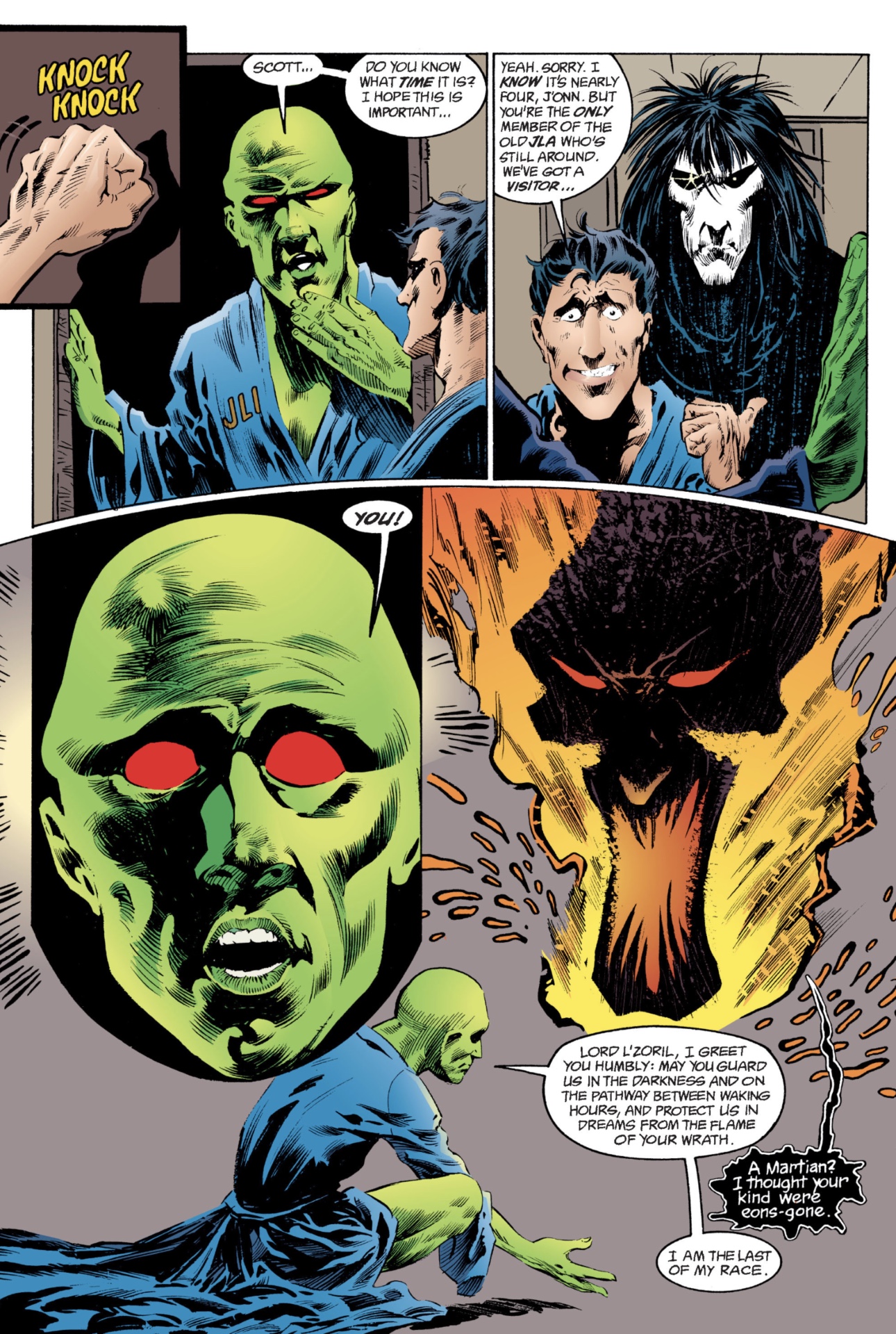
Gaiman ab initio pitched District of Columbia a serial publication around a different Sandman - Garrett Sanford, the second Sandman, who was created by Jack Kirby in the '70s.
This version of the Sandman was actually meant to be the human form of the folkloric Sandman (who is aforementioned to bring sleep and dreams to masses away sprinkling backbone in their eyes, hence why you may sometimes awaken with 'sleepy sand' in the corners of your eyes). In that way, the Garrett Sanford version of Sandman did immediately charm Gaiman's creation, WHO is himself a mythical being.
DC approved Gaiman's estimation for a Sandman claim - but with a stipulation. He had to produce a solid current translation of the character. Gaiman took the mythical nature of Kirby's Sandman, and the sour, squasy feel of the original Golden Age Sandman of the Justice Smart set of America, and filtered them through his personal '80s goth sensibilities to bob up with the dour, ambiguous Morpheus.
Artist Sam Keith offered awake the initial design for the character, drawing on Gaiman's own all-black wardrobe and even his semblance, along with inspiration from goth icons of the Clarence Shepard Day Jr. much as Peter Murphy of Bauhaus and Robert Smith of the Cure.
Capping sour the design, which was settled close to the stark demarcation between Morpheus' dark, moving robes and porcelain pale skin, is Morpheus' painting Aspiration helm, crafted from the skull and spinal column of a unknown, long-dead god who dared challenge him in eons past.
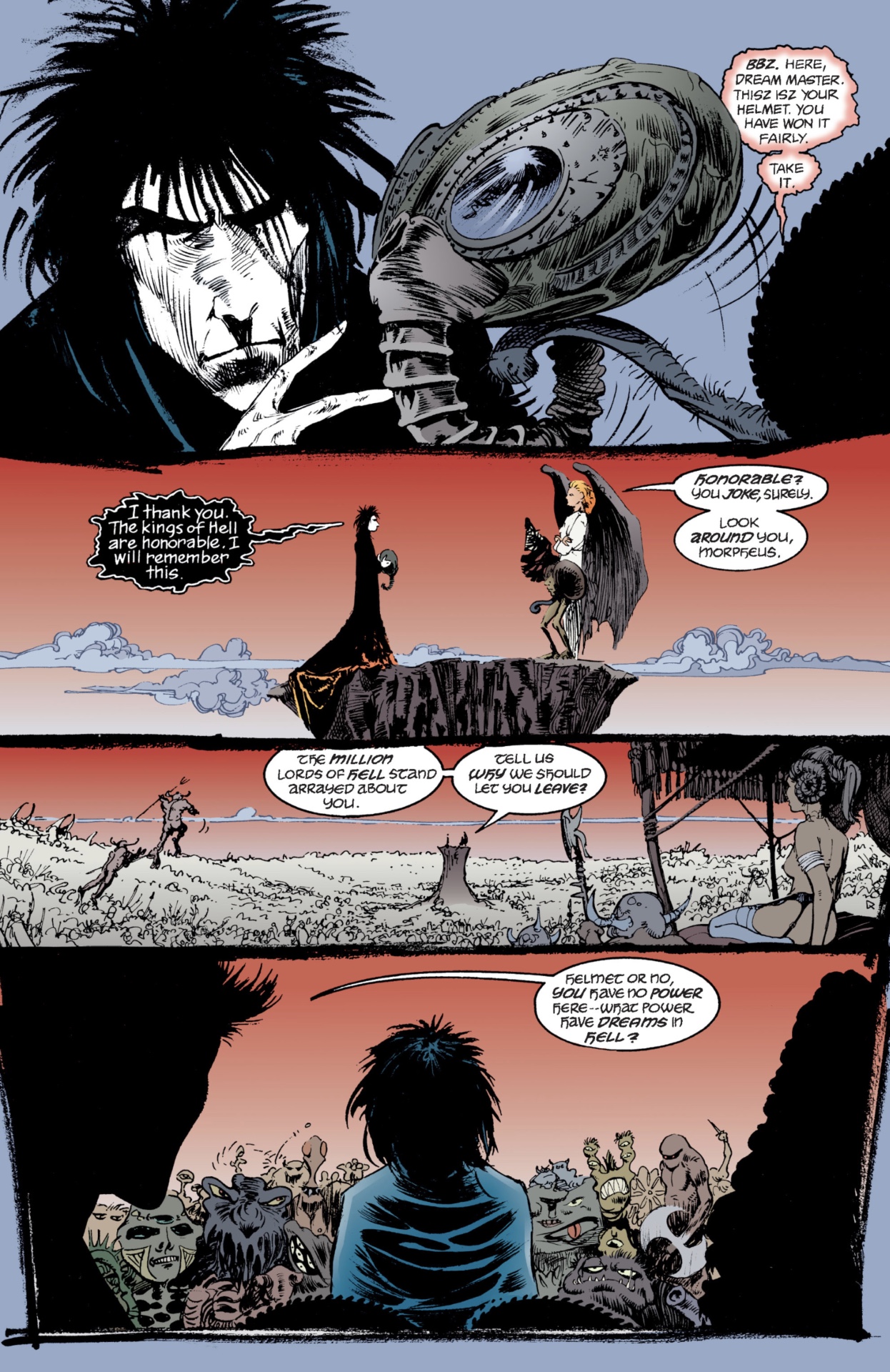
On with being his trophy, the helm is actually Morpheus' 'sigil' - his connection to the other Endless, entirely of whom bear artifacts and objects connected to their specific identities.
As for who the other Dateless are, on that point's Desire, Despair, Devastation, Destiny (brought in from previous DC traditional knowledge, he's the only Endless to predate Gaiman's Sandman), Craze (who was formerly familiar as Delight before a swell tragedy befell her), and finally Death, well the most familiar and popular of the Long besides Dream himself.
By the way - you may notice we're switch between calling the character 'Ambition' and 'Morpheus'. The past Endless mostly call him Dream, but 'Morpheus', as in the Greek god of dreams, is one of Dream's favorite guises among mortals and is a name he uses in numerous contexts.
And, as IT turns out, 'Dream' is really many of a title than a name. But we'll come dorsum to it.
With all of that in situ for Gaiman's Sandman, the story of stories was ready to be told.
The death of Dream

The full animation story and narrative of Dream of the Endless is far too winding and terrific to concentrat to a elongate summary. Stretching across all of human history (and beyond) it encompasses rafts of characters, narrative arcs, and layers of storied metaphor that are corneous to transmit in bite-size bits.
That said, the main arc of Morpheus himself moves as a subplot through the full title, weaving its major beats through every arc - and it all kicks off in the series' opening tale, The Sandman: Preludes and Nocturnes, which forms the basis of the first season of the future Netflix show.
In Preludes and Nocturnes, a wizard named Roderick Burgess (played past Jacques Alexandre Cesar Charles Dance in the Netflix show) summons and imprisons Dream, keeping him locked away for decades. This plays havoc with human race, as most people lose the ability to dream - if not sleep at all - until Morpheus escapes captivity.
Returning to his home realm of the Dreaming, an expansive, imaginative landscape of unending fantasy environments, Morpheus discovers his domain has unchaste into disrepair and sets approximately to recover trine magical artifacts that were stolen from him while he was captive - including his helm.
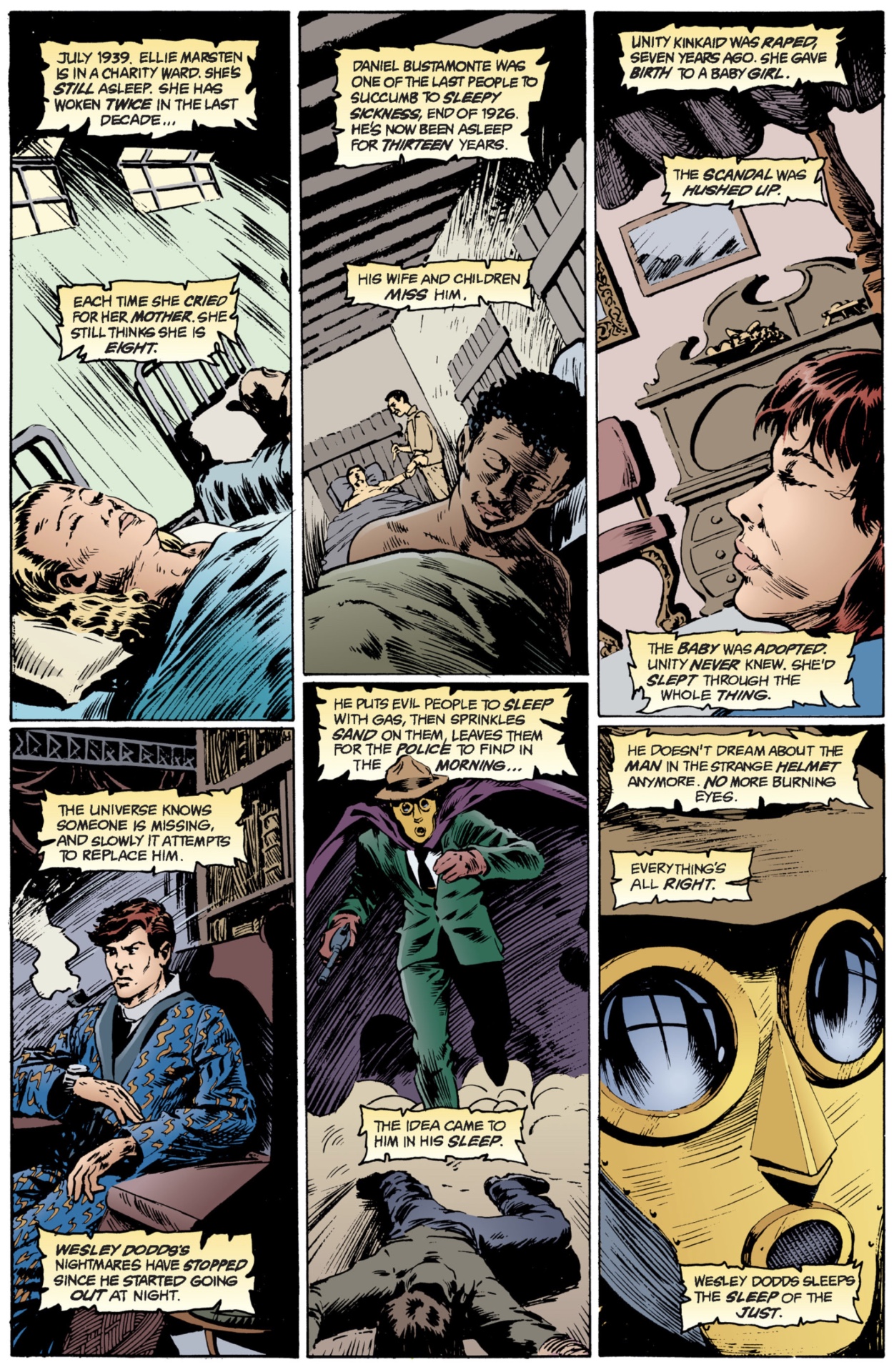
First Morpheus seeks out his pouch of magical sleeping Sand, retrieving information technology from the ex-lady friend of none other than Privy Constantine.
He then travels into Hell itself to get back his helm from Lucifer (the very character modified into the Netflix show, where he's played by Tom Ellis), beating the arch-demon in "the oldest game," a engagement of marbles and one-upmanship.
In conclusion, Dream must retrieve his magical dream gemstone, the Materioptikon, from trucking rig-obscure Justice League scoundrel John Lackland Dee/Doctor Destiny, who has become warped aside its realism-neutering powers. Smashing the sorcerous ruby in an attempt to harm Ambition, Dee instead releases its power, allowing Morpheus to regain his full strength.
(Learn more about The Sandman: Preludes and Nocturnes - and why information technology's essential reading - right here.)
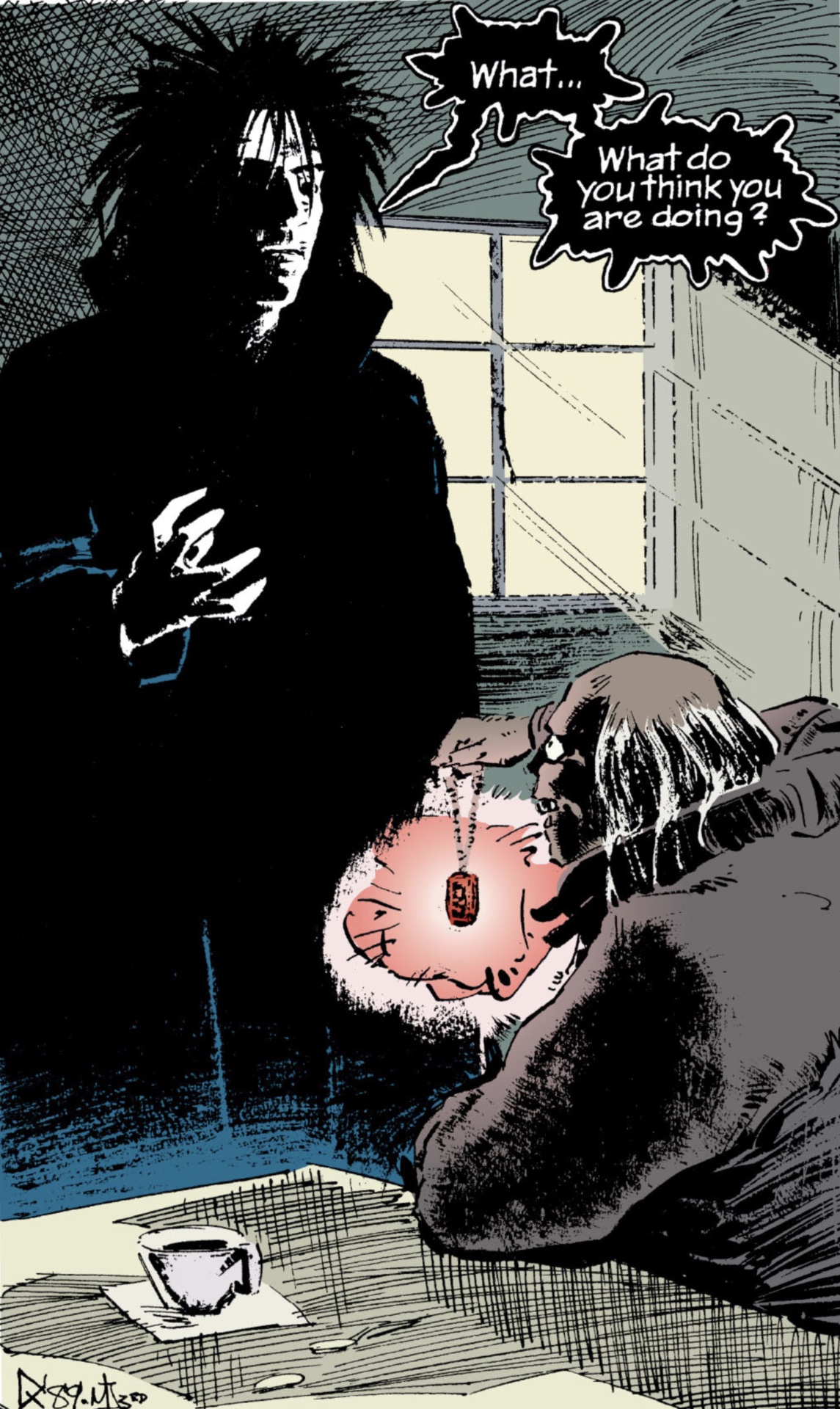
From there, the self-titled narrative of Morpheus' final days - all crafted step-by-mistreat through his own complicated machinations - plays out o'er the course of The Sandman.
Snapping back and onward through different eras (and true contrastive realities), The Sandman paints a picture of Morpheus as a self-serving, somewhat arrogant adventurer whose pleasure with his own brightness has faded all over time.
This leads to an emotional crisis following his imprisonment in which Morpheus decides to pass the mantle of Dream down to a new bearer - in that case, Daniel, the infant son of two quondam District of Columbia heroes, Lyta and Hector Mansion.
With Daniel ascension to become the new avatar of Ambition, Morpheus passes into limbo, with beings from all corners of realism grieving his death (whatever death means to someone whose sister is, well, literally Death herself).
Sandman in the DC Creation
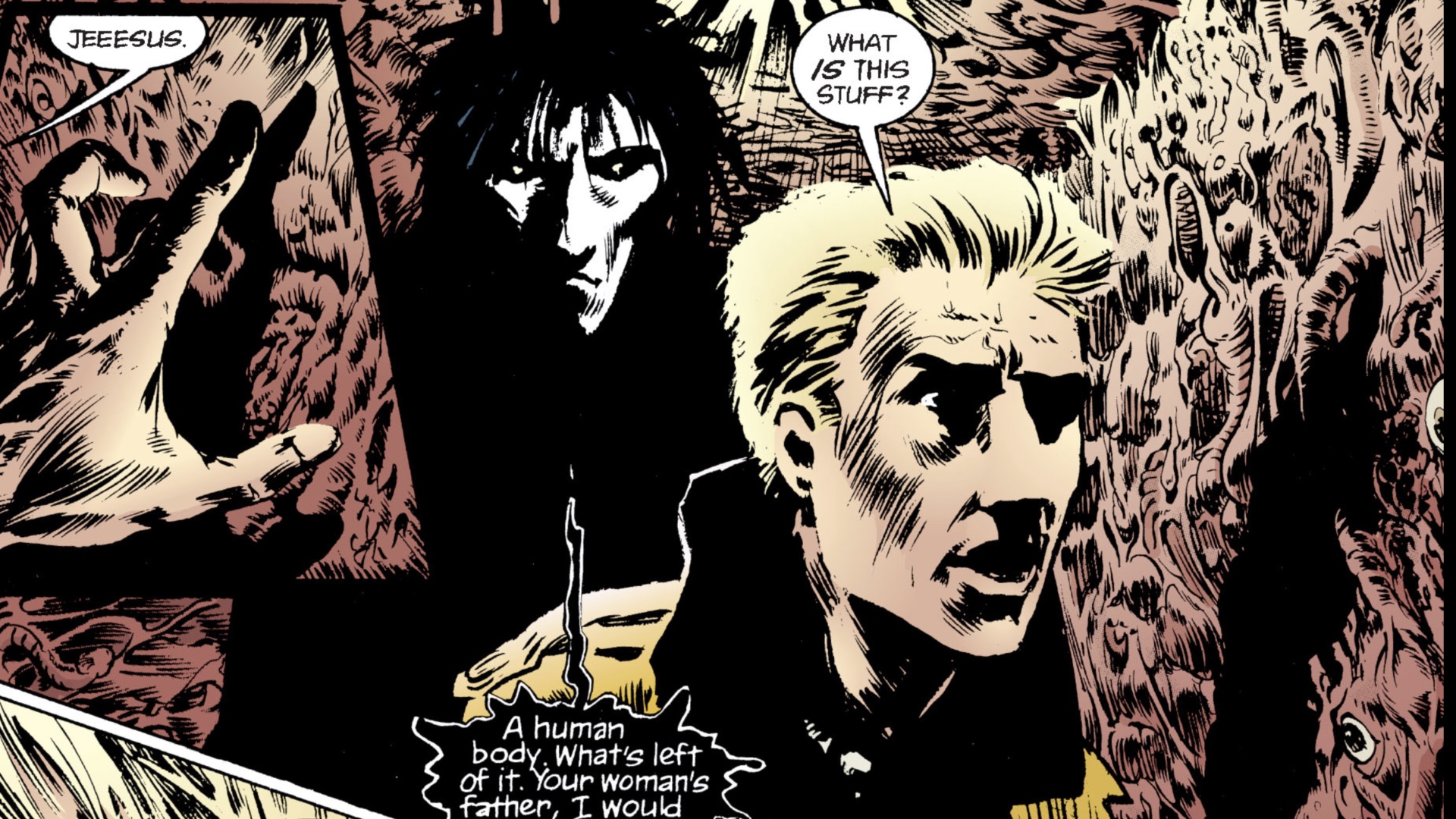
When The Sandman launched, it took place squarely in the DC Universe, with cameos from the Justice League, Etrigan the Demon, Swamp Thing, John Constantine, and more more Direct current characters (the like the aforementioned Doctor Destiny).
This eventually included Kirby's Sandman Loft Sanford, and the Golden Age Sandman Wesley Dodds (who was later given his own Sandman adjacent title, Sandman Whodunit Theater, with the titles establishing odd connections between Dodds and Morpheus).
And of course, there were Lyta and Hector Hall, formerly known Eastern Samoa Fury and Silver Scarab of Infinity, Inc., the parents of the infant Daniel Hall, who would become Morpheus' replacement arsenic Dream.
Shortly after The Sandman's 1989 debut, DC emotional several of its more meridian-orientating titles, including Sandman, Hellblazer, and Deluge Thing under its new Giddiness imprint, a line designed to showcase stories, characters, and cognitive content that wouldn't fly in the mainstream DC Universe.

This allowed The Sandman to incorporate more mature, darker storytelling in its issues, simply also largely separated the title from DC continuity - though there would be some crossover, peculiarly after Sandman concluded with 1996's #75.
In the years chase Sandman's conclusion, the characters would occasionally appear for a revival ace-shot or limited series, with Death receiving various spin-offs of her own. But for the most function, they remained dormant - that is until 1998's JLA #22, and its follow up in the 1999 relaunch of JSA, some of which brought Daniel into the DC Universe proper.
The revived JSA title brought together a new version of the Justice Society with a roster of some classic and rookie members, WHO formed in the wake of the funeral of Wesley Dodds. In a bold move for the time, Daniel/Dream himself appeared in a dream sequence in the issue in which Sand Coleman Hawkins, Dodd's other crony, dreamt of his mentor's end.
Over the course of the run, Hector Hall became unrivalled of the guide characters of the title, culminating in a later cameo from Daniel/Dreaming in which he reunited with his parents, Hector and Lyta.
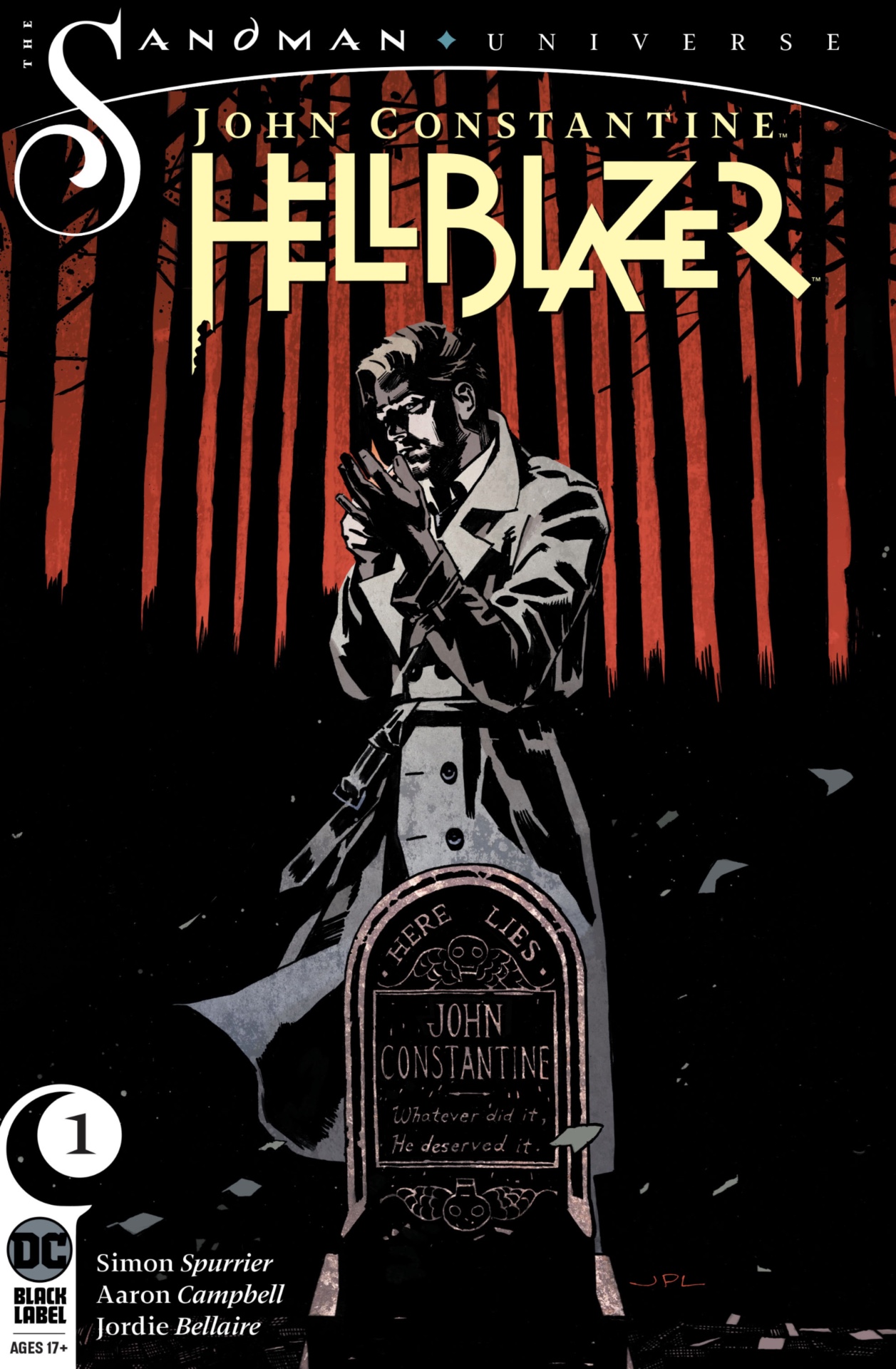
Since then, the Endless have once once again remained for the most part separate from the District of Columbia Universe - though in 2010's Action Comics #894, Lex Luthor had an encounter with Death herself while he was on a cosmic quest to master power over life and dying.
D.C. celebrated Sandman's 25th anniversary in 2013 with the found of the Sandman: Overture limited series, which brought Gaiman back to Sandman for the first time in years.
Almost recently, for the entitle's 30th anniversary in 2018, DC launched Sandman Universe, a line of Sandman-related titles overseen by Gaiman and which sport characters and concepts from The Sandman.
Past and present Sandman Universe titles let in The Dream, House of Whispers, Lucifer, Books of Magic, John Constantine: Hellblazer, and John Locke & Samara/Sandman: Scheol and Gone (which crosses over with the IDW comic book which was too recently adapted to Netflix).
As for whether Netflix's Sandman wish connect to the DC Universe on film surgery TV, we're going to guess that it won't, given the insular nature of the story and the fact that information technology's on Netflix rather than in theaters or on HBO Max, where other DC shows are scheduled to air.
But you never know - anything can happen, in a dream.
The Sandman and its bequest ingest had a heavy impact connected the nature and direction of modern comic book storytelling.
Source: https://www.gamesradar.com/sandman-the-comic-dream-endless-daniel-hall-morpheus/
Posted by: morrissearenes.blogspot.com



0 Response to "The Sandman: Who is Morpheus, the Lord of Dreams? - morrissearenes"
Post a Comment